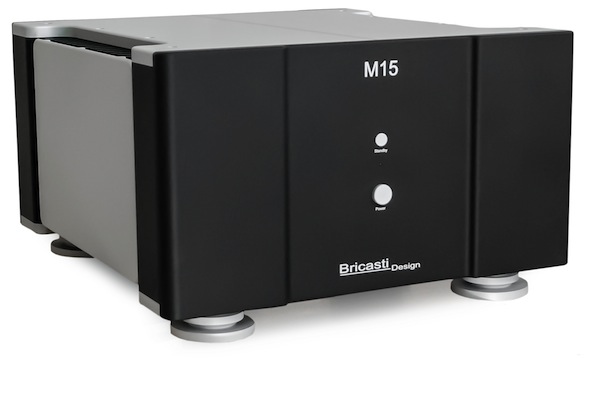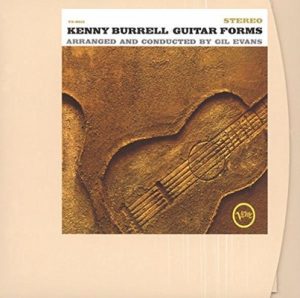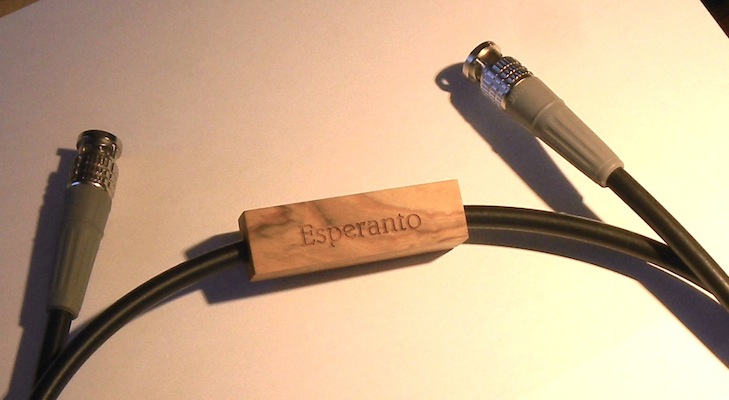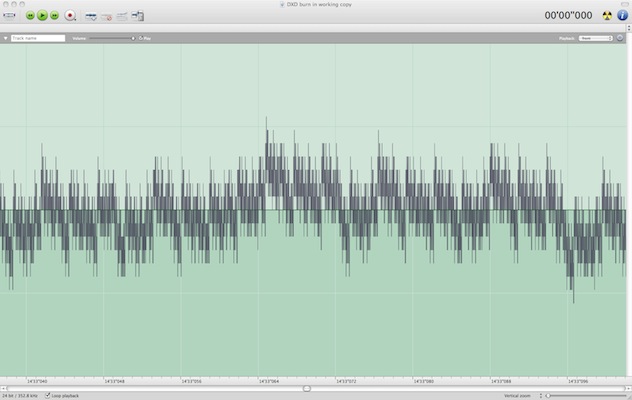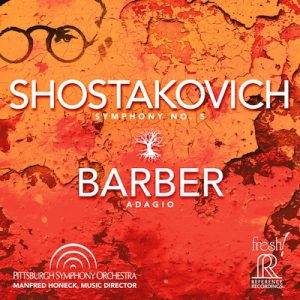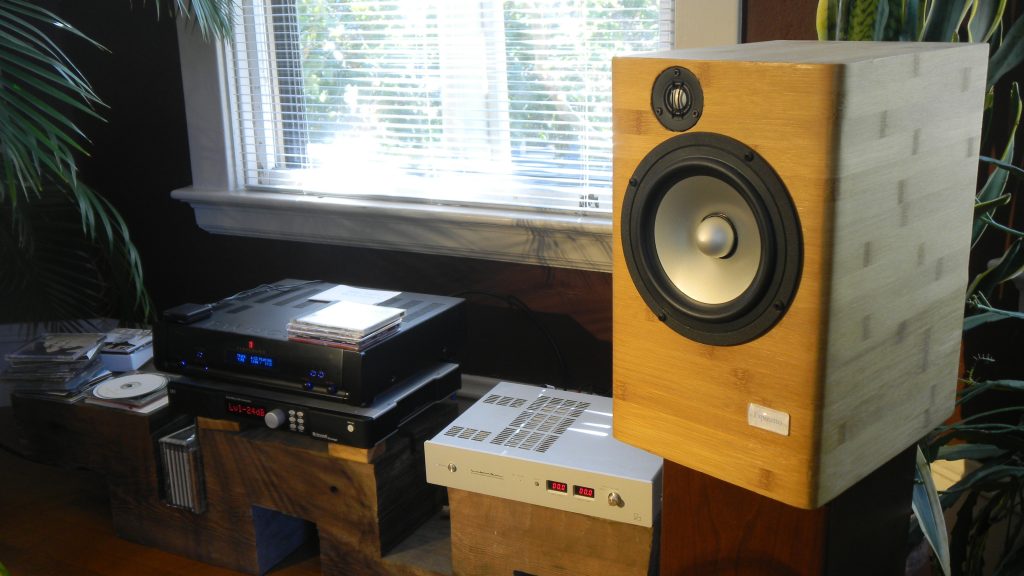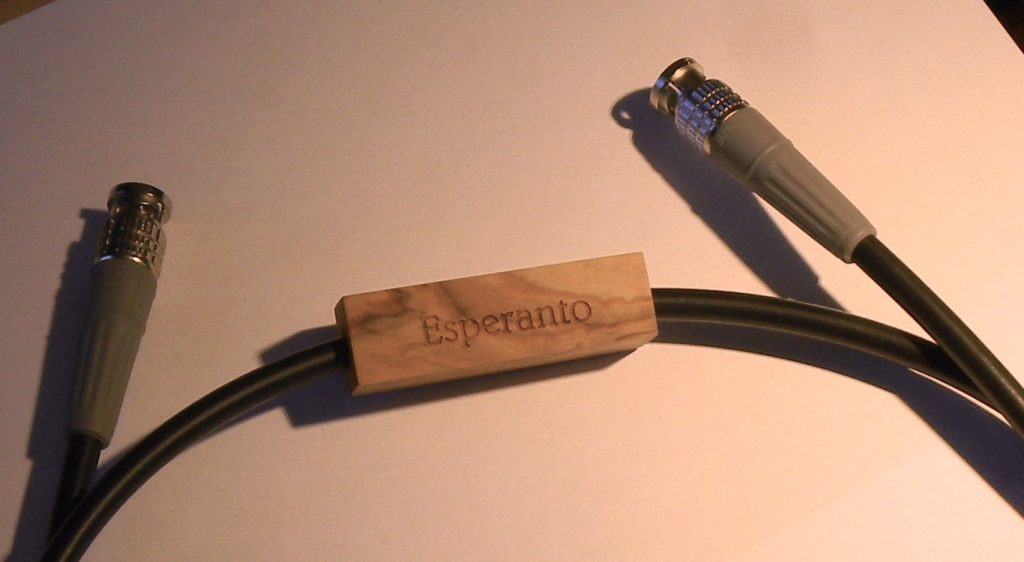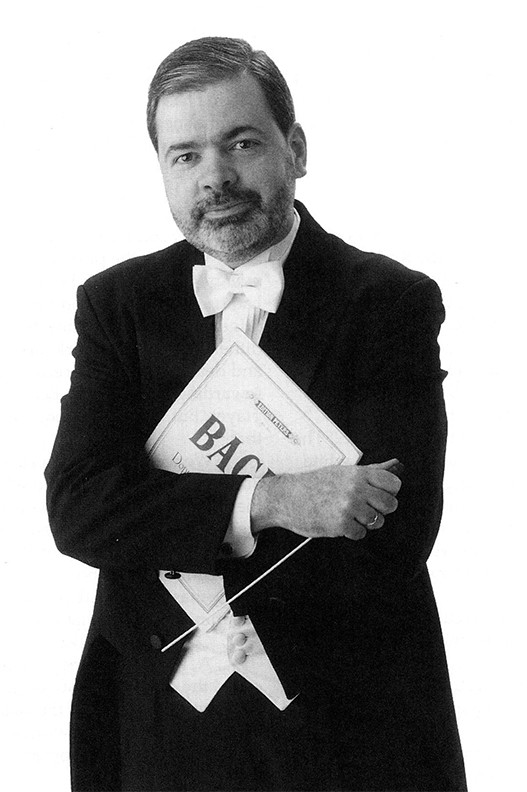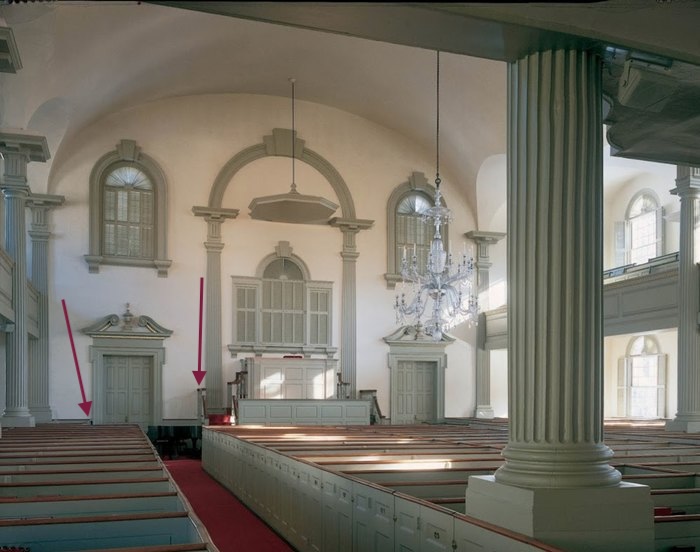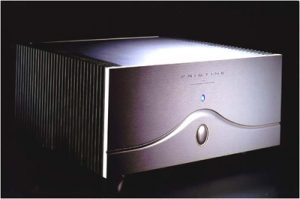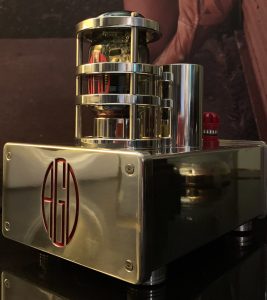I just had a rather arresting (in the sense of, one has to stop doing anything else, and just listen) listening experience. I want to share it with you. The music I was listening to is from an underappreciated (really, almost unknown) classic-era jazz recording; but I have heard it many times.
However, I had never heard it like this—it was a real "Holy Poop!" moment. (The truth is, I did exclaim rather loudly, 19 seconds into my favorite track.)
The recording is Guitar Forms, guitarist Kenny Burrell's 1965 orchestral collaboration with arranger and conductor Gil Evans, the same Gil Evans of Miles Davis Sketches of Spain fame. (Guitar Forms remastering, Verve 314 521 403-2; imported CD from Amazon; also available streaming from Tidal.)
Creed Taylor (later of CTI, the crossover label that so many loved to hate) produced, while Rudy van Gelder was the engineer. Session players included Lee Konitz, Bill Barber (both of whom played on the Birth of the Cool recorded live performances, as well as the recording sessions), Ron Carter, and Elvin Jones. How can you beat that? Guitar Forms is a wonderful recording, so even if you are not in the market for a new power amp, you owe it to yourself to read on. A generous sound sample and more audio commentary are to be found after the jump.
To say that Guitar Forms is Kenny Burrell's orchestral collaboration with Gil Evans is perhaps a bit of an overstatement. Five of the album's nine tracks are orchestral settings, but three are small-combo jazz; and one piece, a Gershwin Prelude, is a guitar solo. That said, seeing that as to my ears the most treasurable tracks are the orchestral ones, I think no harm done.
Before I talk about my favorite Guitar Forms track, the one I had not listened to since the last major change to my stereo system, I want to explain what the critical listening session I was about to undertake was all about.
Esperanto "Black" Word Clock Cable - The olivewood block is from the Holy Land.
After leaving Stereophile magazine (voluntarily, and on good terms with John Atkinson), I took steps to commercialize the cable designs I had been doodling and experimenting with for the few years before that. I call my company Esperanto Audio. My first products were digital cables, but I recently completed a production run of electric-guitar cables, and I am close to pulling the trigger on producing balanced analog cables.
The design goals of my digital cables are to minimize signal degradation by careful attention to the limitation of internal electrical reflections; optimizing mechanical resonances; and, neutralizing the mechanical stresses that are the unavoidable by-products of any cable-fabrication process. Parts of the process are trade secrets, but one important part is a unique burn-in tone that I created, that is meant to be applied to digital cables, but in the analog domain.
Therefore, to burn in my digital cables before sending them out to a dealer or customer, I use the digital cables as analog cables, and pass a massive (about 15 octaves tall) tone cluster (made up of Mandelbrotian-nested square waves) through them. The frequencies span from below 5Hz, up to 88.2kHz. (The tone cluster is carried in a DXD 352.8kHz PCM file.)
After this has gone on for many hours, I then put the cables back in between a transport and a DAC, and listen critically to assess their performance against my reference set.
For day-to-day listening, I use an Esperanto Audio "Blue" S/PDIF cable (MSRP $600). A customer recently ordered a "Black" S/PDIF cable, which has an MSRP of $1600. I set up to burn it in (that is, the digital cable is carrying an analog signal). I came in the next day and rearranged the signal path so the digital cable was again doing digital duty.
Some weeks earlier, I had taken Guitar Forms out to listen to it again at some later time. An outgoing-cable burn-in Quality Control check seemed to be as good time a time as any. I cued up Track 8, Harold Arlen and Yip Harburg's "Last Night When We Were Young."
The track starts with some orchestral (or perhaps more properly, big-band) large-scale scene painting, in typical Gil Evans fashion. But the orchestrated introduction soon comes to an end. At the 19-second mark, Kenny Burrell's solo guitar enters.
Holy Poop. The centered tonal solidity, the vivid dynamic immediacy, the shimmering harmonic complexity, and the dynamic nuance—all conveying the pure beauty of Burrell's (admittedly, very close-mic'ed) acoustical-guitar playing, were entirely eye-popping. (And this recording is from 1965!)
Here's a nice big chunk of Burrell and Evans' "Last Night When We Were Young."
Track 8: "Last Night When We Were Young"
I had heard that track through my Black cables before, but I don't believe that I had played it since Brian Zolner of Bricasti Design had dropped off Bricasti's new stereo amplifier, which, at 125Wpc versus the Bricasti M28's 200Wpc, costs $18,000 (compared to the monoblock M28's $30,000/pr.).
Wow. I had already decided that Bricasti's M15 was a world-class product, but… there are many world-class products.
Really. Tastes may vary, but in terms of design excellence and build quality, I don't think that anyone can claim that choosing among the top offerings from Mercedes, BMW, and Lexus, any of those brands is heads-and-shoulders above the others, or that one of them is a dog that does not belong in that category. However, above and beyond "world class," at least in my room with my associated equipment (more about which later), Bricasti's M15 sounded magical.
The last amplifier I can remember that gobsmacked me to the same degree (during in-home auditions), in terms of sheer listenability and musical enjoyment, was darTZeel's original NHB-108, which I reviewed for Stereophile way back in 2003. Before that, I think it was Jeff Rowland's Model 5, for its solid but agile musicality, which I lived with briefly in the mid 1980s. Please note that these three amplifiers are not of the "you can weld with it" brute-force variety. darTZeel's first amplifier had a claimed output of 100Wpc, while the Rowland 5 had a claimed output of 150Wpc.
Bricasti claims a very conservative 125Wpc for the M15. I cheerfully state that the loudspeakers I listen to the most often were designed by Mike Zisserson, with (largely conceptual) input from me. The Esperanto Parolanto prototypes (that name is a lame pun in the constructed international auxiliary language called Esperanto) are 2-ways with 6.5-inch woofers. They were designed to be easy to drive. Specifically, Mike and I believe that rated efficiency is less important than the smoothness of the impedance curve and the absence of a problematic electrical phase angle.
Moreover, avoiding when impedance and phase angle synergize in a bad way is extremely important. Therefore, while the Parolanto prototypes might be rated at only 83dB 1W/1m; their impedance curve is very even, and their phase-angle characteristic is benign. Our design decisions in this regard were the exact opposite from the case where a loudspeaker is 90dB (or more) efficient, yet has an impedance curve that dips below 4 Ohms in the same region where the phase angle is punishing for most amplifiers. Punishing, because the time lag between voltage and current means that there is less usable power. If I had to draw an analogy to illustrate the phase-angle problem, I might say that when you are trying to push a heavy object, you usually crouch lower instead of standing up straight, because if you stand up straight there is more wasted effort and less leverage.
Back in the day when Halcro amplfiers were all the rage, I tried them out on the then-new Aerial Acoustics 20T, which, as John Atkinson's measurements later showed, was challenging in exactly the way I have been talking about here. The Halcros made the 20Ts sound like they were not as large as they really are—one listener said that they made the (four feet tall, 250 pounds each) 20Ts "sound like small speakers." Whereas the same pair of 20Ts, driven by Plinius' SA-250 amplifier, filled a 30 x 60-foot room (that has a 15-foot high ceiling) with high-resolution pipe-organ music at realistic volume levels.
Given the facts that the prototype Esperanto Audio loudspeakers are 2-ways that are easy to drive; that my room is not large; and that I do not listen very loudly very often, Bricasti's M15's 125Wpc is probably somewhat more than I need. (However, if I acquired much larger speakers that were a more troublesome electrical load, I just might need Bricasti's 200Wpc M28 monoblocks. Horses for courses.) The rest of the system is a Parasound Halo CD 1 player used as a transport, a Bricasti M1 DAC, and Esperanto Audio XLR balanced interconnects and S/PDIF cable.
One other exceptional recording has figured prominently in my evaluation of Bricasti's M15. I was intrigued to read that Reference Recordings' SACD of Manfred Honeck conducting the Pittsburg Symphony in Shostakovich's symphony 5 had, as a disc-filler, the orchestral-strings version of Samuel Barber's famed Adagio from his first string quartet.
I was even more intrigued to learn that Honeck believes that Shostakovich's fifth is chock-full of Gustav Mahler references and homages. I requested a physical disc as well as a high-res PCM download. I listened to both, and again was gobsmacked. To skip ahead a few months, that selfsame recording was awarded two Grammys: Best Orchestral Recording, and Best Classical Engineering.
Not incidentally, Honeck's "Pittsbugh Live" Shostakovich/Barber disc was recorded location-live by Soundmirror, Inc. Furthermore, in Soundmirror's Boston studios, the playback signal chain for mixing and mastering (for both stereo and multichannel programs) includes Bricasti power amps. The Bricasti amps at Sound Mirror are not only the M28 monoblock "battleships"—Soundmirror has several M15 "cruisers" as well. (A Bricasti M15 weighs 90 pounds; but please do not get it dripping wet.)
Brief comments on the performance and sound of Honeck's revelatory Shostakovich/Barber disc, and then, the objective and subjective coverage on the M15.
When I sat down and listened to the Honeck/Pittsburgh Mahler 5 (not to be tactless), I had a hard time believing it was by a second-tier American orchestra and not a first-tier European orchestra. I must not be the only one who thought that way, because the recording later did win two Grammies! The performance incorporated its own internal logic of nearly-operatic drama, but without histrionics. I got a very clear sense of transitions between light moods and dark, or hope and fear. I also got a very clear sense of when Shostakovich's utterances were genuine, and when they were mocking (or taking the form of parody). The orchestral sound is at the same time powerful and transparent. Articulation and ensemble are world-class. Solo playing is so wonderful. To sum up, the interpretation and the recording are revelations. In particular, the slow movement perfectly captures a sense of expectation that mingles hope and fear. (After all, the symphony is about life in Stalin's Soviet Union.) The last movement, of course, is smashing.
There have been times when I can try to explain why certain recordings get Grammies only on the basis of, Academy voters who do not know much at all about classical music vote for the best-known names (regardless whether they have heard any of the discs on the short list), or on the basis that they vote for the person whose last recording got the Grammy last year (Georg Solti, please take a bow). This is the special case (I think Andris Nelsons' Grammies are the same thing) where a very deserving recording got the award. (I do not say "the most deserving," because I have not heard all the eligible recordings.)
Honeck has his own thoughts on the Adagio from Barber's first string quartet. Honeck may be right, or, he might be wrong. (If he is wrong, certainly no harm was done.) Honeck believes that the later (1967) a-cappella choral version that sets the Latin text of the Catholic Mass ordinary prayer "Agnus Dei" was in the back of Barber's mind from the beginning. In other words, Honeck thinks that because the Latin text fits the music so perfectly (and also because, duuh, Barber in his youth had been a church organist), that—forget the orchestral version—before Barber wrote the string-quartet movement, he was already hearing the Agnus Dei in his head. And that insight (or at least conviction) informs Honeck's interpretation:
I have allowed myself, against traditional contrapuntal interpretation,
to direct the phrasing according to the nuance of the spoken text.
My friend and musical colleague Steve Martorella came by for a listening session. In his youth, Steve studied music at the Vatican, so I think it is fair to say that he probably knows something about Agnus Deis. I played him some Shostakovich from the disc without telling him the orchestra or conductor, and all his guesses were European. He was as impressed as I was that the playing we were hearing was from an American orchestra, but not one we usually think of as first-tier. As for the orchestral Barber Adagio, Steve agreed with me; this was the best one he had heard. And if the truth of the matter is that all those Recording Academy voters were voting for the Barber and not the Shostakovich, I actually have no problem with that.
Samuel Barber, Adagio for Strings
Bricast's M15 stereo power amplifier is 10.5 inches tall, 17 inches wide, and 18 inches deep. It weighs 90 pounds. Rated power is 125Wpc into 8 ohms, 250Wpc into 4 ohms, and 500Wpc into 2 ohms. Claimed frequency response is 10hz-150kHz, within 0.5db; signal to noise is claimed to be greater than 85db at full rated power. Total Harmonic Distortion plus Noise is claimed to be less than 0.005% 20hz-20kHz at full rated power into 8 and 4 ohms. The power topology is fully differential.
Bricasti's M15 was designed to be used with Bricasti's M1 digital-to-analog converter, which has its own volume control and which was the source component for this review. Or, the M15 can be used with Bricasti's M12 source controller. (The M12 is based on the M1, with the addition of (among other things) a discrete resistive-ladder volume control.) Or, the M15 can be used with any another full-featured DAC, as long as that DAC has true balanced outputs. The M15's User Guide states how important it is that the M15 be fed a genuine complementary, dual-differential analog input.
To make gain matching as accurate as possible and as easy as possible, the M15 has on its rear panel a detented setscrew Gain Trim adjustment (one setscrew adjusts both channels) that can reduce the input gain in -6dB increments for a possible total reduction of -18dB. What this means in practical terms is that if you never drive the M15 to full power, and therefore the signal is going to get attenuated somewhere, having the larger chunk of attenuation happen in the analog domain at the amplifier's inputs may have some sonic benefit, in that it means that your DAC's digital gain control is making less of a change.
That is, if the volume setting on your M1 DAC is usually down in the -40 range, reducing the M15's sensitivity as much as possible by the rear-panel trim pot means that the DAC will then attenuate in the digital domain by roughly only half as much. I did play around with this feature, and the bottom line I found was that when I could match the M15's input gain to the recording's level so that I could listen with the M1's volume control at -0, I did feel there was a worthwhile increase in transparency and immediacy. (But I have resolved not to drive myself crazy over this.) And I hasten to offer the observation that the M1's volume control is very transparent (I think more transparent than all but the best analog preamps), and also the caveat that there might be a confirmation bias at work in this particular regard.
The M15's binding posts are made in-house, and, like all the other details, are excellent. The M15's feet are vibration-cancelling footers co-developed with Stillpoints. For my listening, I used a Cardas Clear power cord, but its improvement over the very hefty cord that came with the M15 was worthwhile, but not night-and-day.
To sum up: The Bricasti M15, no matter how hard I pushed it, never sounded electronic-y. But neither did it ever sound like it was detached or playing things safe. I was just listening to Sarah McLachlan's angst-fest Surfacing. With the M1 DAC's volume control set all the way up to "0," I heard some little production details (such as overdubbed unison voices) that I had never heard before.
Bricasti's M15 power amplifier gives what I call the "You are in good hands with Allstate" feeling.
It just sounds right. And Grammy-winning record producers and recording engineers definitely agree with that.
Highly recommended for in-home audition.
Bricasti Design M15 Solid-State Stereo Amplifier
US MSRP $18,000
Bricasti Design
2 Shaker Road, Building N
Shirley MA 01464 USA
978.425.5199
FTC compliance: Bricasti Design pays The Tannhäuser Gate a modest annual sponsorship fee. In return, one of the category icons in the top menu bar of TTG's Home Page is a photo of a gold-plated Limited Edition M1 DAC.




